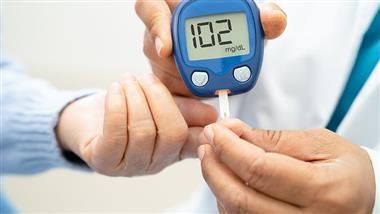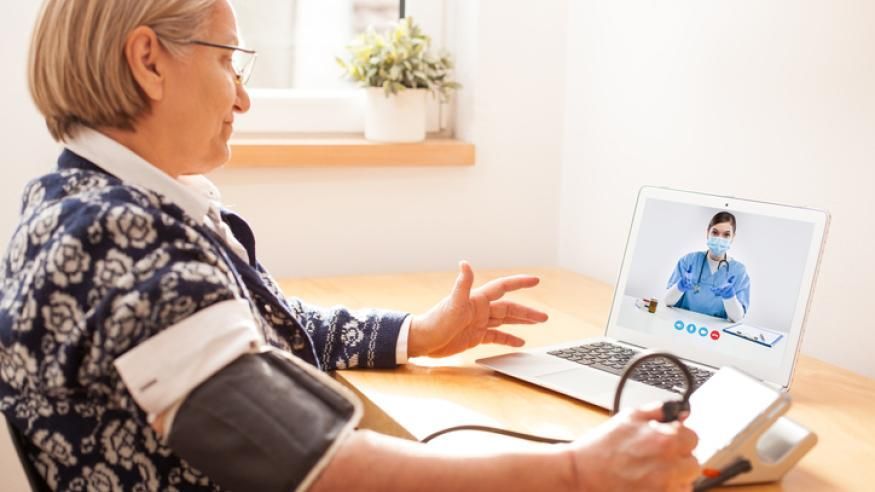Your Guide to the 2023 ADA Standards of Care
Your Guide to the 2023 ADA Standards of Care
In December, the American Diabetes Association (ADA) released its 2023 Standards of Care, which offer the ADA’s annual update on how healthcare providers should implement diabetes care and counsel individuals with all types of diabetes. Learn how these standards continue to evolve.
On December 12, the American Diabetes Association (ADA) released its 2023 Standards of Care in Diabetes. The ADA’s Professional Practice Committee (PPC) has updated these standards annually since 1989. To produce these updates, committee members and ADA staff search for and review new research, use their own expertise, and consult with subject matter experts. This year’s PPC represented a more diverse than ever group of diabetes experts, including clinicians, researchers, psychologists, and diabetes care and education specialists.
The Standards offer guidelines to healthcare providers, researchers, insurers, and people with diabetes and their loved ones on the optimal management of all types of diabetes and its complications. Having knowledge of optimal diabetes care could help people with diabetes and their loved ones advocate for and obtain the best possible care to live a healthy life.
To gain further details, view the standards online, the summary of revisions, an abridged version aimed at primary care providers, or the 30-minute highlights video by Robert Gabbay, MD, Chief Science and Medical Officer of ADA. Also be aware that through the year, ADA provides updates to the Standards as needed in ADA’s Living Standards, which are interim updates.
Due particularly to new research and treatments that have emerged over the last 20 years, diabetes management has evolved from being focused solely on glucose to placing much more importance on weight management, blood pressure, and blood lipids, as well as care of the cardiovascular system (heart and blood vessels) and protection of the body’s organs and systems that are typically affected by diabetes.
Revisions to the 2023 Standards range from major overarching themes to more minor changes, as detailed below.
- Diagnosis and prevention of diabetes
- Encourage the use of the more accessible point-of-care A1C testing to offer more rapid and available screening and diagnosis of diabetes rather than a lab-drawn A1C, which can delay diagnosis and discussion of treatment for months. With a quick A1C result in hand, a provider can discuss the A1C result in real time and use shared decision-making to discuss, if deemed necessary, a person’s next step in care. This recommendation came with the message to healthcare providers to be more aggressive about preventing type 2 diabetes and diagnosing pre-diabetes and early type 2 diabetes.
- Management of people with pre-diabetes and high risk for type 2 diabetes
- Emphasize the use of more intensive approaches in the care of people at high risk of developing diabetes. This includes people with a BMI ≥35, those with higher-than-normal glucose levels and A1C, as well as people with a history of gestational diabetes.
- Consider a multi-pronged approach to management that includes weight management, slowing disease progression, reducing cardiovascular risk factors, and using medications to adequately achieve and maintain management goals.
- In people who have had a stroke or have evidence of insulin resistance and prediabetes, consider prescribing the glucose-lowering medication pioglitazone. This medication can reduce the risk for stroke or heart attack as long as it can be taken without side effects.
- Raise caution that the use of statin medication to improve lipid levels may, as a side effect, increase the risk for type 2 diabetes. Providers are encouraged to regularly monitor glucose levels in those without diabetes but not discontinue the use of statin medication because of its cardiovascular benefits.
- Emphasis on weight management and obesity treatment
- Manage obesity as a chronic disease that is progressive and often associated with medical, physical, and psychosocial complications.
- Weight management—both weight loss and the maintenance of lost weight—is now considered just as important in prediabetes and diabetes management, as is glucose management.
- Documented in these standards with greater clarity is the impact of various levels of weight loss. It is noted that both smaller (~3-7%) and larger (>10%) weight loss provides improvements in glucose management. More significant weight loss (up to 15%) can lead to greater health benefits that include reduction in risk factors for cardiovascular or related problems, like strokes and heart attacks, as well as the possibility of reversing type 2 diabetes. Four different approaches to achieve and maintain weight management should be considered to support people with obesity, including: 1) healthy behavior and lifestyle changes, 2) intensive evidence-based structured weight management programs, 3) medications for weight loss, and 4) metabolic surgery.
- Greater weight loss (up to 15%) is more achievable today with newer medications that assist with weight loss and long-term management, including tirzepatide and semaglutide. These medications are listed in the ADA medication guidelines as having “very high efficacy” for both glucose and weight management.
- Reduction of cardiovascular risk factors and disease management
- This has become an increasingly important and encompassing area of diabetes management because of the high incidence of health problems and death due to cardiovascular disease in people at risk for and who have diabetes. In addition, there are medications that can help reduce risk factors and incidence of heart-related diseases.
- Greater emphasis is placed on reducing the risk of developing heart and kidney problems and protecting these organs from damage with specific recommendations. The recommendations focus on proper choice of medications, generally SGLT2 inhibitors or GLP-1 receptor agonists for people with atherosclerotic cardiovascular disease (ASCVD), and/or those with high risk for heart and kidney disease, heart failure, and chronic kidney disease. Today, more than ever before, there are medications that lower glucose levels and assist in the prevention or management of these other conditions.
- The Standards aligned the target for blood pressure to be in sync with other major organizations that set these guidelines. High blood pressure is now defined as a systolic blood pressure ≥130 mmHg or a diastolic blood pressure ≥80 mmHg (<130/80 mmHg).
- The target for LDL-cholesterol is <70 mg/dL in people ages 40-75 years with diabetes and risk factors for ASCVD and <55 mg/dL in people with diabetes and existing ASCVD. In addition, a LDL reduction of 50% or greater from the starting point LDL with a high intensity statin medication and then use of an additional medication, such as ezetimibe or a PCSK9, is recommended if the goal level is not attained. This underscores the importance of cardiovascular disease prevention and management.
- Reduction of chronic kidney disease risk factors and disease management
- With the use of SGLT2 inhibitors playing a role in protecting the health of kidneys, the levels of kidney function for which it is recommended were lowered.
- A newer medication, finerenone (a nonsteroidal mineralocorticoid receptor antagonist), is more widely recommended in this set of Standards to reduce the progression of chronic kidney disease and reduce cardiovascular events.
- In people with established kidney disease, more frequent monitoring of urinary albumin creatinine ratio (UACR) and estimated glomerular filtration rate (eGRF)—1 to 4 times per year—is recommended, based on disease severity.
- Criteria for referral to a nephrologist (a doctor specializing in kidneys) were broadened to include people with continuously rising levels of UACR and eGFR.
- Screening and management of nonalcoholic fatty liver disease (NAFLD)
- Prevalence of NAFLD is increasing among people with type 2 diabetes, but it is often not screened for or detected. Early screening and management can reduce disease risk and improve outcomes. The recommendation was made to encourage use of the FIB-4 test to screen individuals at high risk, including people with obesity, chronic kidney disease, and older age.
- Weight management is an important first step to managing NAFLD. The goal is to achieve at least 5% but preferably 10% weight loss. However, to significantly impact the progression of NAFLD, most people will need obesity management medications or weight loss surgery. In addition, the use of a GLP-1 receptor agonist and/or pioglitazone can further improve glucose management and lipid levels and reduce fat in the liver in people with pre-diabetes or type 2 diabetes.
- Neuropathy and amputation prevention, and screening for peripheral artery disease
- The Standards recommend increased focus on the prevention of amputations with an emphasis on screening for peripheral arterial disease (narrowing or blockage of the vessels that carry blood from the heart to the legs) as a means of detecting problems early.
- Initial screening for peripheral arterial disease should include a number of simple assessment tests and checks, including lower-extremity pulses, capillary refill time, venous filling time, and other checks of blood flow.
- As a preventive measure, a comprehensive foot evaluation should be done at least annually and at every visit in individuals with evidence of sensory loss, prior ulceration, or a prior amputation.
- Use and integration of diabetes technology into care
- A strong recommendation was made for offering the use of continuous glucose monitoring (CGM) in people with type 2 diabetes on basal-only insulin therapy (once-daily, long-acting insulin) in addition to people on all other types of insulin regimens. Of note is that Medicare is currently considering coverage of CGM for this population.
- People who use CGM should be made aware of and educated about interfering substances that can negatively impact sensor accuracy. A new table lists six interfering substances.
- The importance of considering a person’s preference for certain diabetes devices as well as assuring that they have access to uninterrupted supplies was stated.
- The relatively new FreeStyle Libre 3 CGM is now designated a real-time CGM option, whereas the FreeStyle Libre 1 and 2 are considered flash glucose monitoring, which requires intermittent scanning of the sensor. This real-time designation is important for reimbursement.
- The Standards recommend that, when hospitalized, people should be supported by their healthcare providers and others in the hospital setting to continue using their devices.
- Incorporation of psychosocial care into diabetes care
- The Standards more strongly promote the importance of mental well-being as part of diabetes care and access to mental health resources to support well-being.
- The use of psychosocial screening is advocated with referral to mental health providers or other trained healthcare providers when a person has symptoms of diabetes distress, depression, suicidality, anxiety, treatment-related fear of hypoglycemia, disordered eating, and/or diminished cognitive capacity.
- Achieving glucose targets
- Healthcare providers are encouraged to help people set goals for glycemic management during appointments as one means to achieve success.
- A more relaxed goal for glucose targets was recommended for people with frailty and high risk for hypoglycemia: >50% time in range and <1% time below range are recommended.
- Consider social determinants of health among one of the factors when choosing a glucose-lowering medication. Metformin is mentioned as an inexpensive medication that is both safe and effective.
- Screening for sleep problems and achieving sleep health
- People with diabetes and pre-diabetes should be screened for sleep disorders and be referred, if necessary, to a sleep specialist for management. Assessing sleep patterns and duration is considered by ADA as part of a comprehensive medical evaluation. Sleep disorders, including insomnia and obstructive sleep apnea, are risk factors for type 2 diabetes and are common in people with diabetes.
- Advocacy for team-based diabetes care
- An emphasis on the use of non-physician healthcare providers to provide care, counsel, and support to people at risk for and with diabetes is highlighted throughout the guidelines. As part of this guidance, there is a broader recognition of the important role social determinants of health have on a person’s ability to implement and continually execute their diabetes care plan.
- The Standards recommend that all people receive counseling in healthy lifestyle behaviors and diabetes self-management education and support (DSMES). These services must be provided in culturally appropriate ways based on race, ethnic/cultural background, sexual orientation, gender identity, technology access, education, literacy, and numeracy. Social determinants of health should guide the design and delivery of DSMES programs with the goal of achieving health equity across populations.
- It is suggested that wider delivery of DSMES may be provided through the use of telehealth and other modes of technology-enabled delivery.
- The Standards encourage the use of community health workers, who often serve as a workforce for outreach, advocacy, social support, health education, and more. Community health workers can support diabetes and cardiovascular risk factor management, especially in underserved communities and health care systems.
- Screening for food insecurity
- It is important that people are screened regularly for food insecurity. The Standards state that any member of the diabetes healthcare team can screen for food insecurity using a two-question screening tool.
- The ADA suggests addressing food insecurity by seeking out and integrating community resources into primary care (for example: medically tailored meals, fruit and vegetables prescriptions, etc.) as well as addressing food deserts in underserved communities.
The 2023 ADA Standards reinforce previous iterations of the Standards in emphasizing that the delivery of quality care to people at risk for or who have diabetes requires regular comprehensive assessment and referral to specialists and special exams when necessary. In addition, continuity of care and regular assessment of the current care plan—with changes as needed to achieve target goals and prevent or delay diabetes complications—is all essential.
Lastly, these 2023 Standards place particular emphasis on considering the individual, their well-being, and myriad factors that impact life and quality of life when providing comprehensive diabetes care and counsel.
Healthy Bites
















